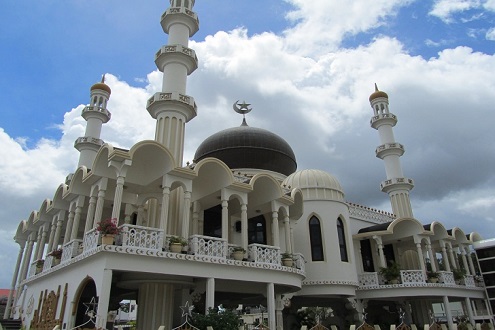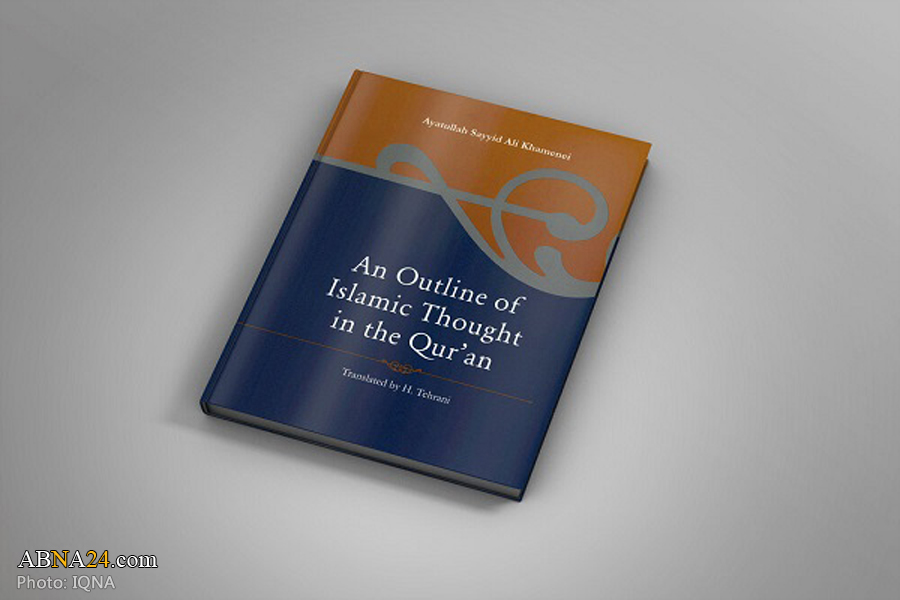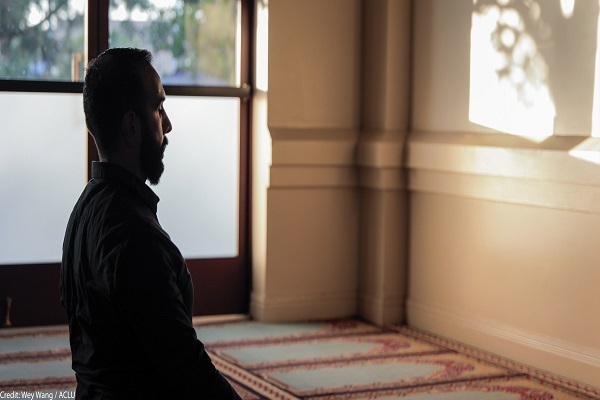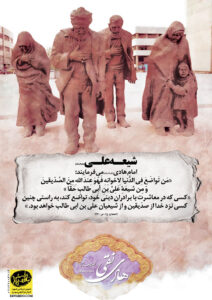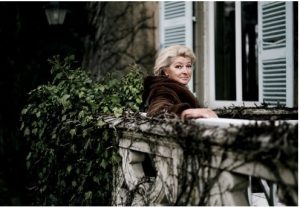
Margherita Agnelli de Pahlen will not disappear. She will not jump off a bridge like her brother, Edoardo, or accidentally overdose like her son Lapo, or die tragically—or prematurely—like so many other members of her rich and powerful family, who are known as the Kennedys of Italy. at Agnelli family events. She says her soft-spoken second husband, Serge de Pahlen, who worked for 22 years for Fiat, was unceremoniously fired in 2004. (Fiat says it is company policy not to comment on internal matters.)
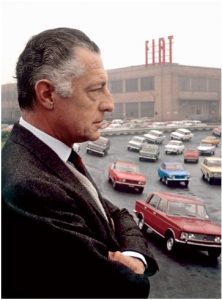
She promptly called Gabetti, her father’s long-time aide-de-camp, and asked him, “What was the need for things to go so quickly?” She says he told her not to worry; everything would be cleared up in a month’s time, at a meeting before a notary in Turin. Just before that meeting was to take place, she says, she called Gabetti. “I told him, ‘Look, do not ask me to sign any papers, because I really want to understand what I am signing and what I am agreeing to or not agreeing to.’ So he says to me, ‘Do not worry.’ There’s nothing that I have to sign.”
When Margherita arrived at the notary’s office, a group was already gathered: her fragile and elderly mother, Marella; her eldest son, John Elkann, the family’s crowned prince, who now, at 32, is the head of the Agnelli business empire; the tall, stately Franzo Grande Stevens, at 79 Italy’s most powerful lawyer; the 83-year-old Gianluigi Gabetti, only temporarily released from the hospital after a bout of pneumonia; and two witnesses.
First there was a reading of the so-called Monaco Letter, in which Gianni indicated his wish for John Elkann to take over the reins of the Agnelli Empire.
And then something else happened, which was absolutely not in the norm of things,” Margherita says. When she walked into the meeting, she and her mother each owned 37 percentage of the holding company Dicembre, which controls the family’s businesses, and John owned 25 percent. Now, Margherita learned, Marella was donating her shares to John.
This was what family members would later call “the crucial event,” which turned control of the convoluted, Chinese-box conglomeration of the Agnelli holding companies—designed to keep the business in family hands—over to John Elkann. Dicembre controls Giovanni Agnelli & Company, a limited partnership which in turn controls a holding company called I.F.I., which in turn controls a $12 billion holding company called I.F.I.L., which owns a controlling 30 percent of Fiat Group, which owns Fiat Auto, Alfa Romeo, Maserati, and a majority of Ferrari, plus a diversified portfolio of holdings in the Juventus soccer team, Intesa Sanpaolo (Italy’s largest bank), and the U.S. real-estate services firm Cushman & Wakefield, among others. Although Gianni Agnelli left shares of Dicembre to his wife, his daughter, and his oldest grandson, he made it clear that his chosen business successor would be the grandson. To guarantee that her husband’s intentions were carried out, Marella donated her shares to John Elkann in order to give him control, thus disempowering her daughter, along with the five children from Margherita’ s second marriage.
“But why are you doing this?,” Margherita says she asked her mother in the meeting. The two advisers began circulating a document to be signed, whereby Margherita would recognize the transfer of shares from Marella to John. Just sign, Margherita says everyone implored her, so we can get back to business. She says Grande Stevens and Gabetti assured her that they would take care of her three oldest children—John Elkann and his siblings, Lapo, 30, an entrepreneur and international bon vivant who is perennially on the best-dressed lists, and their sister, Ginevra, 28, a London-based filmmaker—but then, she says, they added something that appalled her, since she believes all of her children should be treated equally; they said she would be on her own in regard to the five children from her second marriage: Maria, 25, Pietro, 22, the twins Anna and Sofia, 19, and Tatiana, 17.
A month after the meeting in the notary’s office, Margherita wrote the first of seven letters to the consiglieri, asking for a clear and full accounting of all cash, investments, and real estate. A few weeks later, the lawsuit claims, she received an inventory of Agnelli’s estate, but it was only a partial listing covering those assets in Italy.
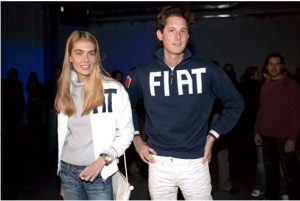
Gianni Agnelli, however, was a global icon, with homes and business interests around the world. Where was the complete listing of his assets outside of Italy?, Margherita wanted to know. She could only get a limited response. When she persisted in demanding a full accounting from her father’s advisers, she says, a wall came crashing down and they began instructing her family and her children to cut off all contact.
The family, however, maintain that they decided on their own to shun her.
On March 2, 2004, a year after the meeting in the notary’s office, Margherita says, she signed a transazione tombale (a final settlement of her father’s estate)—which included the sale of her shares in Dicembre, worth 106 million euros (more than $133 million), to her son John Elkann—and inherited what is estimated by some insiders at up to $2 billion in cash and property.
Margherita has been unbelievably wealthy all her life, though. She says that what really matters most to her is restoring peace within her family. But there is something more: if indeed her father’s estate contains assets other than those originally divulged to her, she demands that they be divided between her mother and her. She says she feels that a lawsuit is the only way she can bring the truth to light.
“When I signed in 2004, it was pour gagner la paix, to gain peace,” she says. “Because my children were told not to talk to me. My mother was told not to talk to me.… And, of course, having lost my father, and on top of it my mother, and on top of it my children, I would accept a treaty for peace with them, rather than hanging on to the shares.”
The Agnellis are a study in dysfunction. Gianni, the international titan and epic playboy of a father, turned the family company, Fiat, into a business machine that transformed post-war Italy into the world’s fifth-strongest economic nation and himself into a colossus of power, privilege, and style. His wife, Marella, a Neapolitan princess turned model, photographer, and taste-maker, who was immortalized by Richard Avedon as one of the world’s most beautiful women, and who became one of Truman Capote’s close confidantes (known as his “swans”), was portrayed by Isabella Rossellini in Douglas McGrath’s 2006 film about Capote, Infamous. Attempting to hold her own in the face of her husband’s sexual wanderlust, Marella once told a biographer, “For Gianni, a woman is to be conquered, not to be loved.” Their only son, Edoardo, cast from the start in the Fredo Corleone role, could never measure up to his father’s expectations, and though he was loved by one and all, he sank into drugs, despair, and ultimately suicide. As for their only daughter, Margherita, though the rest of her family has been well documented, she spent the majority of her life as a mother, giving birth to eight children with two husbands, and until 2004 remained aloof, distant, and separate.
She was born in the midst of scandal. Her father’s alleged affairs with such famous women as Jacqueline Kennedy and the actresses Anita Ekberg and Silvia Monti—to name just three—were common knowledge, and Margherita seems comfortable discussing them with me (though she asks me later not to quote her on the subject). When Marella was pregnant with her, Agnelli was engaged in one of his most torrid affairs, with a noblewoman who was a serious threat because she was his social equal. “Did they tell you that Marella went off to stay in the Argentine with Suni, Gianni’s sister—that she ran away and said she’d ask for a divorce?” asks Countess Marina Cicogna, a long-time friend of the Agnellis’. “Well, that’s what happened.” Such was the climate surrounding Margherita’s birth. “She was a likable young girl, friendly, open, a little bit of a rebel sometimes,” says her uncle Nicola Caracciolo. “She didn’t stand much for discipline, either at home or at school. As a young girl, she was interested in Oriental culture, meditation—like a New Age attitude.”
Margherita tells me stories of how much she loved her father, and of how her love was returned. A good example of their relationship was when, in her teens, Margherita shaved her head for shock value and went to show Agnelli, who glanced up only long enough to say, “If you think you have impressed me, you are sadly mistaken.” A similar anecdote is told of her brother, Edoardo, who was a young boy when his father promised to pick him up in his helicopter and fly him to watch the family’s soccer team, Juventus, play. Edoardo excitedly got dressed and then waited and waited for the father and the helicopter that never came. “Both Edoardo and Margherita suffered from Gianni Agnelli’s frigid treatment of them,” says one close observer, “his inability to love and have normal familial relations, his well-known infidelities, the way he treated and led a separate life from his own wife, coming together only for state affairs, while riding with the president and prime minister, but generally going off and having a string of girlfriends and mistresses.”
Ever present was one of the men Margherita is now suing, Gianluigi Gabetti, who went to work for L’Avvocato (Agnelli’s nickname, for his law studies) in 1971 and served him faithfully for 23 years. Gabetti was the first person Agnelli called each morning, at exactly 6:40. “I have seen him all my life,” Margherita says of Gabetti. “Business-wise, I never discussed things with him except in the later years, when my father asked me to go and ask him questions. He did not seem to care a great deal about giving me answers.” Instead, she says, he would tell her, “Don’t you worry, my little girl. You’ll carry on painting. Your life is fine.”
Gabetti frequently acted as a surrogate father. He escorted Edoardo on a tour of American colleges, including Princeton, where Edoardo would obtain a degree in comparative literature and Oriental philosophy. In an effort to bring young people into the Agnelli businesses, Gabetti hired the smart, handsome son of the leader of Paris’s Jewish community to work at I.F.I. This was Alain Elkann, who became Margherita’s first husband. At their wedding, in 1975, when Margherita was 19, Gabetti served as Elkann’s best man.
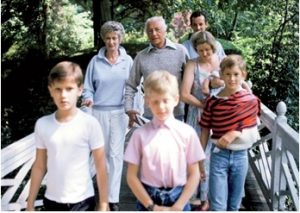
A mother, artist, teacher, poet, and amateur psychologist, Margherita has always been something of an anomaly in Italy’s first family of business. Once she was married, she flew far from the force field of her father and Fiat, moving with Elkann to the New York City area, where he embarked upon a career as a writer and she listened from afar to what was happening at Fiat. They had their three children, John, Lapo, and Ginevra, within the space of four years.
In 1978 they moved to London, settling into a big house in Notting Hill. Two years later the couple split up, and Margherita operated as a single mother. “She was a very kindly mother—lots of cooking at home and baking biscuits and cakes,” says her cousin Marella Caracciolo Chia. “She was very hands-on, which is different from the more formal way she was brought up, with nannies and drivers.”
She met Serge de Pahlen, a Russian count, while teaching art part-time in the alternative kindergarten her children attended in the basement of the house of his sister. She and the children moved with him to Brazil, where he went to work for a French oil company, and almost immediately the couple began producing children of their own. After they married, in 1985, Margherita converted to de Pahlen’s religion, Orthodox Christianity.
Tall, white-haired, quiet, and exceedingly well-mannered, de Pahlen joins us in the dining room overlooking Lake Geneva as Margherita continues their story. From Brazil they moved to Paris, where de Pahlen succumbed to what Margherita had successfully avoided her whole life: he joined Fiat as an international director. “My wife is a woman who decided when she was very young not to be part of the jet set,” Serge de Pahlen told the Agnelli-owned newspaper La Stampa. She continued to live a life apart from that world, including a 1992 vacation in a dacha, a wooden country house, in the wilds of Russia, which ended tragically. One morning before dawn, the couple awoke to find the dacha in flames. Serge smashed the living-room window with a chair, and they literally threw their five children out to safety. When Margherita attempted to save their dog, however, her hair and clothing caught fire. Serge was unable to reach the room where two of the children of the family that had accompanied them on the vacation were sleeping, and they perished in the fire. “You can imagine our anguish, this burden on our souls,” Margherita told a reporter after she had been driven six hours in a minivan to Moscow, where her father sent his jet to fly her to Paris. With burns on 18 percent of her body, she endured months of surgery and skin grafts.
Then came a series of untimely deaths that would cripple the dynasty and eventually suck Margherita’ s family into the maelstrom of Fiat. In 1997, Gianni’s chosen successor, Margherita’sCousin Giovanni Alberto Agnelli, described by the biographer Alan Friedman as “the most enlightened and Americanized Agnelli,” died of a rare form of stomach cancer. He was 33. Immediately, Gianni’s search for a successor “shifted dramatically to my family,” says Margherita. Two weeks after Giovanni’s death, Agnelli shocked everybody by announcing that John Elkann, then 21, would assume the throne. An insider says L’Avvocato was so confident of John’s ascension that he tried to change John’s last name from Elkann to Agnelli, which both Margherita and John, in respect to his father, resisted. Edoardo Agnelli, Gianni’s only son, was never considered for an active role in the business. He had already begun his descent into heroin and his conversion to Islam, defiantly refusing to take advantage of his shares in Dicembre and thereby turning his back on the fortune that was his birthright. Edoardo nonetheless expressed his disappointment over the announcement. “Part of my family has been taken over by a Baroque and decadent logic,” he told the left-wing daily Il Manifesto. “Meaning no offense to anyone, we are approaching the gesture of Caligula, who made his horse a senator.”
I visitEduardo’s house, Villa Sole, a mustard-yellow palazzo in the hills above Turin, from which one has a glorious view of the ancient city of kings and the current home of Fiat, all framed by majestic Alps. The house has been flash-frozen since the day its owner left it. On the morning of November 15, 2000, Edoardo, then 46—and some say broke, disinherited, threatened by his father with institutionalization, and reduced to asking his father’s advisers for his allowance—slipped a brown corduroy blazer over his turquoise pyjamas and drove his gray Fiat Croma to a precipitous viaduct outside of Turin known as the Bridge of Suicides. There he apparently leapt headfirst 200 feet to his death.
Gianni Agnelli flew by helicopter to collect the remains of his son. Margherita was left with his legacy. “Margherita was very close to Edoardo; they would help and support each other, but he would tell her she was naïve,” says a good friend of both of them. “He would say she didn’t understand the political dynamics of the company, that she would believe what people told her.” That naïveté would soon be put to the test.
When Margherita’s father died, she told an interviewer, “It seemed as if the springs of a watch broke, and all of the pieces were scattered.” Agnelli’s senior advisers, however, remained firmly in place. “Mr. Agnelli had chosen Gianluigi Gabetti and Franzo Grande Stevens, who were the closest to him business-wise,” says Countess Marina Cicogna. “And there is absolutely no shadow of dishonesty in anybody’s mind about these two people. Gianni knew he was dying for a long time. This was a man who prepared everything. Margherita is saying, ‘I want all my children to know [the complete assets of Agnelli’s estate], and they’re hiding this from me!’ The point is that Gianni Agnelli planned for everything to be in the hands of these people. That’s the way he wanted it. They’re not hiding anything he didn’t tell them to hide, if anything was hidden.”
A lot may have needed sheltering. When Gianni Agnelli died, Fiat was, as his eldest sister, Suni, would say, “a mess.” Gabetti, who had retired to Switzerland, was persuaded by the family to return to save the company, which he eventually did, even though its shares had sunk 80 percent since 1998. Losses for 2002 were $4.26 billion, and the company’s debt had been downgraded to junk status. The family was forced to divest itself of prime assets, including stakes in Club Med; Château Margaux, the premier Bordeaux wine-maker; and Rizzoli, the publishing firm. “The year Gianni died was the worst and most traumatic year for Fiat,” says Lupo Rattazzi, Suni’s tall, dapper son and one of the most respected of the younger Agnellis, who has achieved success in the airline industry in Europe and who serves on Agnelli-company boards. We are having lunch in Rome, where he lives. “Our family had to dip into our own pockets to save Fiat. There was concrete talk of bankruptcy. We were at a loss when such a patriarch dies. So we started off in the worst possible way. And what is Margherita’s main concern in this year, the worst in Fiat’s history? Her own inheritance.”
There was a very brief period of calm after Margherita signed the documents to settle her affairs with her father’s estate. Then several things happened, she says, that made “mustard come out of my nose”—a French expression to indicate blistering anger. On March 26, 2004, her ire erupted when a deposit of 109,685,000 euros was made into her Swiss bank account from Morgan Stanley’s branch in Zurich. What was the source of the deposit, she asked, which was the equivalent of about $140 million? She says her father’s consiglieri declined to answer.
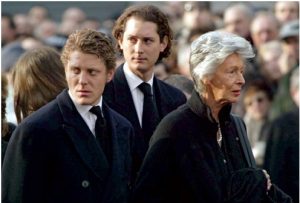
Soon after that, she decided to get her affairs in order for her own succession, so that her estate would pass seamlessly to her children at the time of her death. She called an attorney, whose first question was whether she was satisfied with the terms of her inheritance. That set the matter of the incomplete listing of her father’s properties in motion again. She wrote Gabetti asking questions, but also, some say, issuing demands and making accusations. (She denies she did anything other than request information.) Believing peace had come to her family, on October 7, 2005, she called her middle son, Lapo Elkann, to wish him happy birthday. “And he says, ‘I cannot talk to you until you make peace.’ And the conversation stops there, leaving me very, very sick. And he probably even more sick.” (Lapo declined to comment on the conversation.) Three days later, Lapo, then Fiat’s flamboyant vice president of worldwide brand promotion, survived an overdose of a mix of cocaine and heroin in the apartment of a transsexual prostitute in Turin.
As Margherita continued to question her father’s consiglieri and family members who sit on the boards of Agnelli companies, her relatives began flocking to the house on Lake Geneva to try to talk her out of her fact-finding mission. Their visits usually ended in silence. What they did not know was that Margherita had initiated what would become a two-year investigation into her father’s holdings. Finally, in April 2007, two executive directors from Morgan Stanley wrote her back about her desire to know the source of the 109-million-euro deposit: “We have been advised by the account holder … to not disclose any additional details regarding this payment.”
The men Margherita was attacking were heroes to the Agnelli family. Gabetti, Grande Stevens, and Maron had been instrumental not only in making Gianni Agnelli’s fortune but also in saving it for his family. When Fiat was on the verge of defaulting on 3 billion euros in loans from a consortium of banks, Gabetti and Grande Stevens engineered what The Economist called “an ingenious coup” to save the Agnellis from losing control of the company. In the event of a default, the banks could convert their loans into Fiat stock on September 20, 2005, causing the Agnellis to lose control of the company. As the deadline approached, and the banks began converting the loans, the Agnelli-family holding company I.F.I.L. simultaneously bought just enough Fiat shares from another Agnelli-controlled outfit, Exor Group, to maintain control. This complex “equity swap” caught the attention of Consob, Italy’s equivalent of the Securities and Exchange Commission, which launched an investigation. In February 2007, Consob fined I.F.I.L. and Giovanni Agnelli & Company a combined 7.5 million euros. Gabetti was fined 5 million euros and given a six-month suspension from holding a director’s post at a public company, and Grande Stevens was fined 3 million euros and given a four-month suspension.
Fiat, however, was soon thriving, to such an extent that Margherita’ s shares in Dicembre, which she had sold for 106 million euros in 2004, would be worth roughly twice that amount today. Some say the increase in value might be a major reason for her lawsuit, but Margherita vehemently denies it.
If Agnelli’s advisers did discount or dismiss Margherita, it was a mistake. Although she says, “I have always believed that my main occupation was the one of being a mother,” she has also become a philanthropist, having co-founded Blue Orchard, a micro-credit company that now provides short-term, low-interest loans for women in 33 countries to help free them from the bondage of poverty and prostitution. With offices in Manhattan, Lima, and Geneva, and a staff of more than 20, her company has more than $700 million in funds. In June, she opened a home for orphaned and abused children next to her brother’s house in Turin and dedicated it to him. She founded the institution, she says, “to further Eduardo’s quest for a better world for everybody, especially for children, as he saw their defenceless innocence being injured and found it unacceptable.” The home can accommodate 10 children between the ages of 6 and 14.
As she began to unearth information about her father’s estate, Margherita says, a “bomb” began to grow in her belly. “Was I going to let it go, or was I going to keep it in my stomach for another 10 years?” she asks. She felt that if she didn’t get it out in the open it would destroy her. “So I decided I was going to let it go.”
The bomb she threw, in the form of a lawsuit on May 30, 2007, was devastating, not only because of the pain it inflicted but also because of the ramifications it might have on the Agnelli family and businesses. Her 14-page summons reveals a matrix of seven trusts and investment vehicles that Agnelli may have created to guard his assets, which, Margherita’ s attorney says, could constitute “a parallel patrimony” that might even surpass the official listing of Agnelli’ s Italian assets, which some have estimated at $3 billion. They include Calamus Trading, fima, CS-Group, Sikestone Invest Corp., Sigma Portfolio Corp., Springrest Inc., and, most interesting, Alkyone, a foundation established on March 16, 2001, in Vaduz, Liechtenstein, to manage Agnelli’ s assets abroad and offshore. The administrators of Alkyone were, not surprisingly, Gianluigi Gabetti, Franzo Grande Stevens, and Siegfried Maron, who was in charge of the family offices in Zurich and Geneva, where he looked after Gianni Agnelli’ s “international movable property,” according to Margherita’ s lawsuit.
The suit claims that Gabetti, Grande Stevens, and Maron were to be accountable to Margherita, who demanded of them a complete listing of her father’s “movables, real estate, bank deposits, stocks, investments in general, even the ones placed through foundations, trusts, and similar fiduciary trusts, as well as partnerships; the report has to be undersigned, completed in an analytical way, describing each source of income, with details about the actions taken in terms of management and with information pertaining to the historic evolution of the assets” from January 24, 1993, forward.
If the report turns up a whole new fortune, according to the lawsuit, Margherita has a right to her share of the hitherto unreported assets. The three consiglieri will be responsible for “damages eventually caused by their violation of their duties as agents and/or administrators of someone else’s interests.”
After the bomb came the artillery. Margherita’s attorney knew that the lawsuit would be major news. Because Fiat Group controls several Italian media organizations, including the powerful La Stampa and Corriere della Sera newspapers, he also knew that Margherita needed to get her side of the story out before the forces of Fiat and the Agnellis could spin their own story. Therefore, concurrent with the filing of the lawsuit, the Milan-based public-relations firm representing Margherita, D’Antona & Partners, leaked news of it not to a newspaper in Italy but to the U.S. edition of The Wall Street Journal.
“We were ambushed,” says Lupo Rattazzi. He declares that Margherita’ s statements—that her lawsuit is business, not personal, and that it’s against her father’s advisers, not her family—are, well, bullshit. “Her mother was subpoenaed in a Turin court,” says Rattazzi. “So it’s very hard to say she hasn’t involved her family.” Rattazzi says John Elkann called him the night before the lawsuit was served and told him, “Unfortunately, she’s decided to go public. Tomorrow there’s a whole thing in The Wall Street Journal.”
The day after his mother’s lawsuit was made public, John Elkann told the press, “I am very hurt as a son and surprised by this private matter, which was resolved in 2004 with everyone’s consent and agreement.” Meanwhile, Margherita stoked the fire in the Italian media with vitriolic remarks about the three consiglieri (“They are no longer just the guardians of my father’s assets; they think they are my father”), their control over John and Lapo Elkann (“Someone took my sons hostage”), and the psychological abuse she claims to have endured (“Were I not morally strong, I would have jumped off a bridge like my brother did”).
John Elkann has issued the following statement :
Gianluigi Gabetti adds:
I have provided on more than one occasion exhaustive answers to this line of questioning. I did so in the main because this is a situation that has caused me a great deal of personal suffering, since I always cared for Margherita de Pahlen and sincerely hoped I might be able to clarify any possible misunderstanding and restore the peace. Reluctantly I now have to recognize that I was naïve in this hope, since the same accusations continue to be made. At this point, as I have been called before the court by Mrs. de Pahlen, and indeed have already appeared there, I think it is in that place that the facts must be made clear and the truth established.
For Margherita to go outside the family with a family matter was contemptible to the de facto leaders of the Agnelli clan—Gianni’s four octogenarian sisters. And to turn to the media? Unimaginable. The sisters plunged into one of their most heated campaigns since they reportedly dissuaded Gianni from marrying the British divorcée Pamela Churchill (later Pamela Harriman, the U.S. ambassador to France under President Clinton) in 1952. Most galling to the sisters were Margherita’s public statements that “her father, if he were alive, would approve of what she’s doing,” says Lupo Rattazzi. “Anyone who’s known Gianni Agnelli knows for a fact that nothing could be further from the truth. Nothing could be more abhorrent to Gianni than a public spat on inheritance issues, let alone from his own daughter.”
Something had to be done. An urgent meeting was called, and the heads of each branch of the Agnelli family travelled to Turin. They decided on an extraordinary measure, for a family that never speaks to the press: if Margherita was going public, so would they. They composed a letter that was eventually sent to several Italian newspapers, supporting the business advisers and criticizing Margherita.
“I was present at the drafting of that letter,” says Lupo Rattazzi. “In spite of what Margherita said, everybody was flabbergasted. I’m not sure Margherita understands this: everybody has a right to go to court. You want to contest your inheritance? Go right ahead and do it. What you cannot do is pass all of the court papers to The Wall Street Journal, hire a public-relations agency to get maximum exposure, because your lawsuit has so little substance that you have to leverage as much as possible with your only weapon … making a public stink of the whole thing. We felt Gianluigi Gabetti was under severe personal strain because of this. Why? Because Margherita was attacking the very people who helped her father amass the fortune he amassed, which she proceeded to inherit a great part of. It was felt of paramount importance to provide a show of support for Gabetti and Grande Stevens before the whole world.”
Dear Margherita,
The letter was signed by Gianni Agnelli’s four sisters and the other family members present at the meeting.
Next, Marella Agnelli, who lives a quiet life at her homes in Marrakech, Turin, and Saint-Moritz, came roaring out of seclusion to set the record straight in a letter to the German magazine Focus, to which Margherita had implied in an interview that her mother was on her side in her search for the truth.
Your article … “Turbulenzen in Turin” … contains numerous falsehoods that add bitterness to an affair that for me is both sad and painful.… I find myself in the unpleasant position of having to defend myself in court, having actually been accused by my own daughter—with whom in 2004 I reached an agreement which was both definitive and satisfactory in all its aspects.… The agreement reached three years ago was signed in complete transparency, on the basis of information provided to numerous consultants that my daughter appointed with the mandate to safeguard her interests. To now point the finger of accusation at my husband’s most loyal advisers—who had no role in this matter—is a gesture of ingratitude that is offensive to the respectability of these people who have always worked—and still work—in the best interests of the Agnelli Group. Not only this. It is an act that betrays the wishes of Gianni Agnelli, my husband.…
With my husband’s memory very much in my mind in this phase of my life, my only wish is to see peace return to the relations between my daughter and the rest of our family, a wish that unfortunately I know I will not see fulfilled while Margherita persists with her senseless initiative. Yours sincerely, Marella Agnelli
Even more pressure was then brought to bear. Margherita claims she was excluded from the baptism of John’s firstborn son, Leone. (Elkann did not respond to requests for comment.) When Margherita had a mass to commemorate the anniversary of the death of her brother, Edoardo, she says, a relative called to say he wasn’t allowed to attend. (Her three children by Alain Elkann and other family members also stayed away.) Just before she was to leave her château to attend an aunt’s 80th-birthday party, Margherita says, she was disinvited in a phone call from a cousin, who told her that the family had delivered an ultimatum: if Margherita attended, they would not.
On January 10 of 2009, the attorneys for all parties involved gathered in a courtroom in Turin, where, in a closed-door session, Margherita’s lawsuit was officially opened. That same day, in Rome, the Agnelli family joined the president of the Republic of Italy at the opening of a major exhibition entitled “Gianni Agnelli: An Extraordinary Life,” featuring 250 photographs of L’Avvocato with everyone from Ronald Reagan to Queen Elizabeth, to Henry Ford II, to John F. Kennedy. Coincidence?
The parties awaited a decision as to whether the case would be heard in Italy or in Switzerland, the official residence of both Margherita and Marella. Why doesn’t somebody just show Margherita the complete list of assets, one wonders, and get it over with? Because so far nobody admits to knowing the full extent of everything Gianni Agnelli actually owned. That means it will most likely take considerable time for Margherita’s lawsuit to reach a conclusion. “Behind all of this is an economy which is kept in the hands of a certain few,” Margherita tells me as we walk into her kitchen for lunch. “They decide what’s got to be done and not done. Who is in and who is out. I am used as a bonfire, to show what is going to happen if you ask questions. As somebody who is ugly, nasty, monstrous.… They say, ‘It’s none of their business. We are in charge.’ They miscalculated. Because I happen to be the only living daughter of my father.” In the interim, she has experienced a renaissance as a speaker about micro-credit around the world, as a painter of icons and religious art, and as a public figure, who for the first time in her life is going out in public.
“The Italian journalist Oriana Fallaci used to say there is no time in life when you feel more alive than during war,” says Lupo Rattazzi. “Margherita probably feels very much alive. In Turin, people will tell you that she’s found a role for herself. She says, ‘I’m not the daughter of this or the wife of that, or the relative of this or that. I’m finally my own self.’ So I think this battle has provided her with a role.”
“What’s the role?” I ask.
The case, as in all things involving theAgnelli’s was quietly settled and nothing more said. Officially the Judge dismissed her claim and ordered her to pay $32,000 but in the usual covert Agnelli manner the Judge gave no reasons.
But the death and/or murder of Edoardo Agnelli are another matter that simply will not go away.
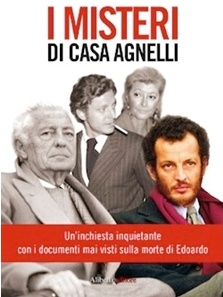
On the 15th November 2000 Edoardo Agnelli, son of Giovanni (L’Avvocato’) and Mirella Caracciolo, left Villa Sole, his residence in the hills of Turin, at 7:20.He drove a grey armoured Croma.Less than three hours later Edward was found dead at the foot of highway viaduct “General Franco Romano” on the Turin-Savona motorway at Fossano.What is known about what he did Edward in the period prior to the discovery of the body?
Strangely very little!
What has now become clear is that there were two Croma cars and one of the Croma cars had passed through a Turin toll road leading to Savona and at approximately 10am his car is found on a viaduct on the same highway with the engine running and the boot lid open. In the two and a half hours Edoardo has repeatedly telephoned several of his collaborators to cancel and set new appointments with doctors, politicians and administrators in the afternoon of that day and the following days.
But were the calls made by Edoardo himself? Was Edoardo driving the car himself or someone else who had murdered him and tried to conceal the fact?
Investigators told the press at the time that an autopsy was carried out on the body. Yet of late it was revealed that no autopsy took place. In fact
Edoardo would have by law inherited his father’s business equally with his sister but Giovanni Agnelli had previously tried to obtain Eduardo’s signature waiving his rights to the companies. When Edoardo refused to sign the problems became acute between father and son with his sister caught in the middle.
It is obviously clear that a person who is about to throw himself off a bridge and commit suicide does not reschedule appointments. The body fell 80 metres and even the cursory medical examination failed to prove such a fall as being consistent with the injuries sustained. Of course since no autopsy was performed one cannot exclude totally suicide because there is no report on the state of the internal organs.
So, one must look deeper into the mystery of Edoardo Agnelli.
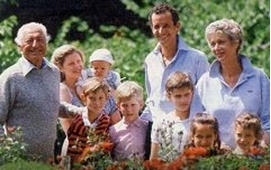
Originally expected to be the heir apparent as the only son, his life made it clear he would never succeed his father. But neither was he prepared to waive the rights to his inheritance and his position. He was in fact intending to share the business with Iranian businessman Mike Sauboriam and to move production to Iran.
He despised the Agnelli business interests and capitalism. After studying at Atlantic College, he read literature and philosophy at Princeton University. Islam for him was the way ahead and FIAT would be the vehicle to ensure that Iran would be accepted worldwide. It was what he told his father and why he would not sign away his inheritance rights.
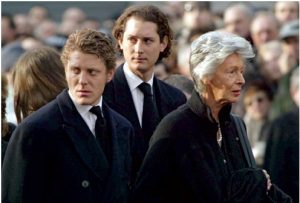
Fiat is by far the biggest family firm in Italy, probably the biggest in Europe. It is also one of the oldest. Inevitably, the House of Agnelli provided the world with a century’s worth of gossip about sibling feuds, prolonged regencies, princely debauchery, and sudden death. There are only so many disasters which can hit a dynasty, and the Agnellis have their share of them twice.
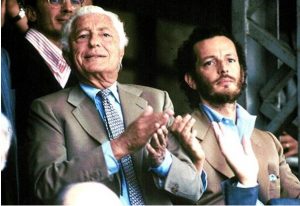
Gianni married Princess Marella Caracciolo, an elegant and shy woman who set out to humanise him while keeping herself out of the papers. They had two children. One is Margherita Elkann, whose eldest son John Elkann now leads FIAT. The other was the tragic Edoardo.
Fiat is by far the biggest family firm in Italy, probably the biggest in Europe. It is also one of the oldest. Inevitably, the House of Agnelli provided the world with a century’s worth of gossip about sibling feuds, prolonged regencies, princely debauchery, and sudden death. There are only so many disasters which can hit a dynasty, and the Agnellis have their share of them twice.
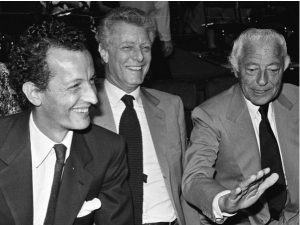
Gianni’s general manager had been his brother Umberto, 13 years younger than him. But Umberto was not efficient in this kind of prolonged crisis, and in 1980 Gianni replaced him with a non-Agnelli, the thuggish but effective Cesare Romiti.
The trouble was that Romiti was no spring chicken himself.
But what about Umberto’s son, Giovannino Agnelli? Here was an intelligent young man with industrial experience (his mother owned a scooter factory and let him run it).
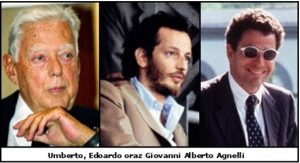
So it became understood that Romiti would eventually give way to Giovannino Agnelli, who would in turn succeed his uncle. In 1997 however, Giovannino died of a rare cancer. Did he die or was he murdered?
To answer that question one needs to look into the history of FIAT and the Agnelli family.
The giant of Italian manufacturing, Giovanni Agnelli founded Fiat in 1899 with an investment of only $400. He became its chairman in 1920, steering Fiat and his good name into the history books. After his death in 1945, his son Gianni became scion of the dynasty. In their home country, the Agnellis have the same hallowed status accorded to the Kennedys in the United States. Feuds, plotting, madness, debauchery and sudden death have so characterised the clan that locals say that if there are only so many disasters that can hit a dynasty, the Agnellis have had most of them twice.
Gianni had a privileged upbringing, but was thrown into the war in 1940 and wounded twice on the Russian front. It was two decades before he took over as president of Fiat in 1966, leading a worldwide expansion of its factories, from the Soviet Union to South America. Nicknamed “L’Avvocato ” (the lawyer), he forged strong relations with the Italian Communist Party, despite being an arch capitalist, he formed close friendships with international politicians such as Henry Kissinger and bankers such as David Rockefeller of the Chase Manhattan Bank.
Gianni became the richest man in Italy, with passions for football, skiing, sailing, motor racing and women. He married a princess, Marella Caracciolo de Castagneto in 1953, and had many sensational love affairs, with Pamela Harriman and Anita Ekberg, to name but two. He lacked one thing, though: a responsible child to whom he could bequeath his fortune. His son, and hoped-for successor, Edoardo Agnelli, despised business and capitalism in general, and, after studying religion at Princeton University, met Ayatollah Khamenei in Iran and reportedly converted to Islam.
Soon after, Edoardo was arrested for drug trafficking in Kenya. At a press conference in Assisi, he spoke about God and announced that he was preparing to take over Fiat. His father publicly disavowed him. But when Edoardo died in 2000, he was survived by an illegitimate son.
The Italian media have kept a blackout of that till today when it can be revealed.
The funeral of Edoardo was the very day he died. Edoardo was laid in the Agnelli vault and the FIAT factories ceased production for a few hours as a mark of respect but then resumed again.
It can now be revealed by‘close friends’ that before his death he wanted to go to Tehran and seek political asylum, as his life was in danger. He was right. There was no way that a Jewish child converting to Islam was going to be permitted to take the biggest car company in Europe to Iran, the number one enemy of Israel. Edoardo was Jewish since the Jewish faith comes from the mother, not the father.
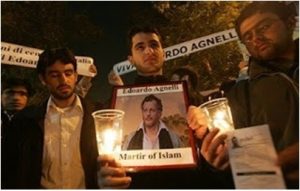
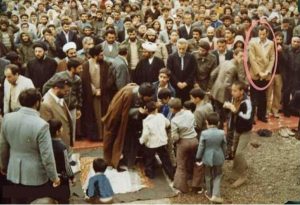
So the orders were simply to eliminate the potential problem. Which isexactly what happened, with the knowledge of the Italian Premier,Giuliano Amato, and the then Foreign Minister, Lamberto Dini. The Justice Minister, Pierro Fassino, was informed only days before Edoardo was killed. The Communications Minister,Salvatore Cardinale,ordered a news blackout ensuring that anything written about Edoardo was to be approved by him first.
Three years later the patriarch Gianni would die- it is said not from cancer, but from a broken heart.
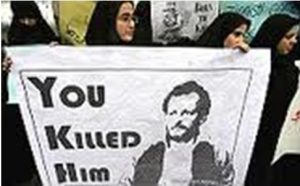
And what has become of the illegitimate son of Edoardo Agnelli?








